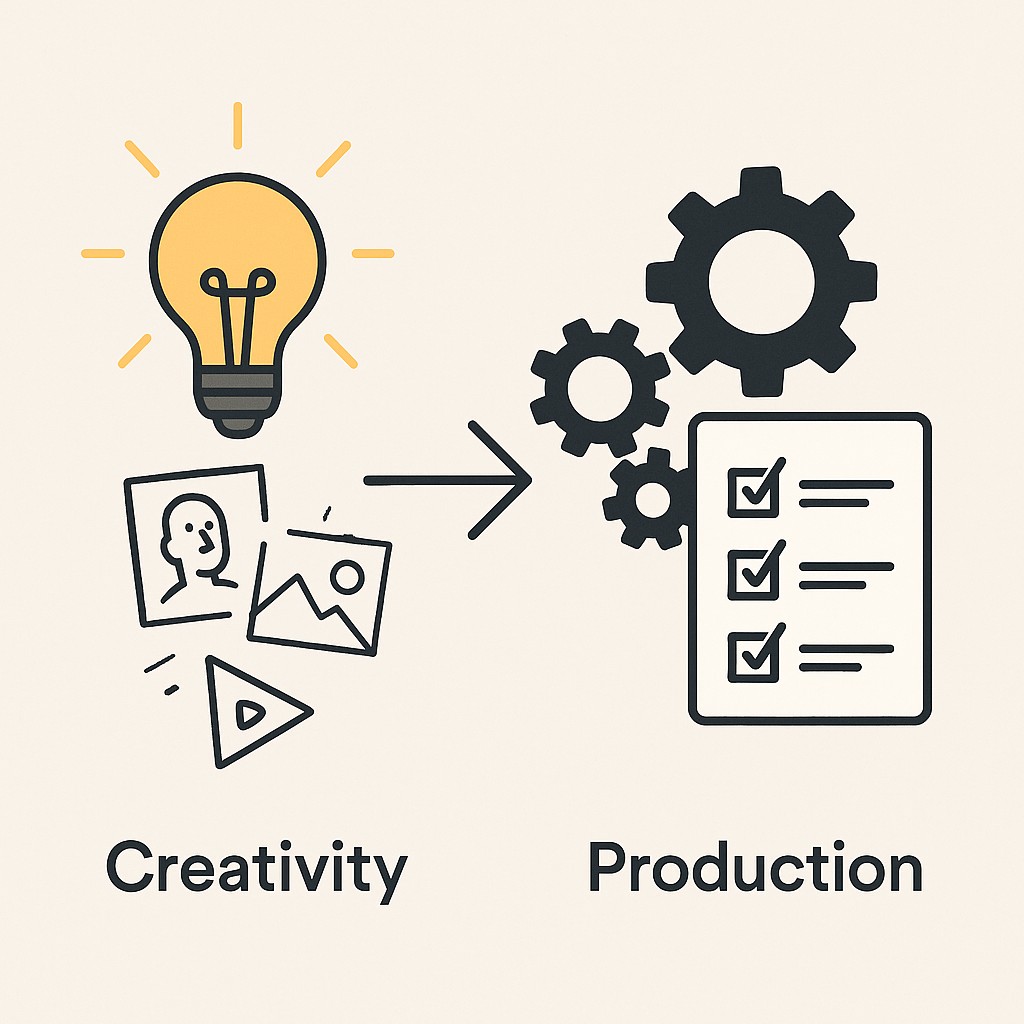Automate Content Marketing with AI: An Engineer-Led Workflow to Ship Weekly, Credible Posts
Automate Content Marketing with AI: An Engineer-Led Workflow to Ship Weekly, Credible Posts

Pretending You Have a Marketing Team
Elan Lee from Exploding Kittens has this way of describing their early days. Pulling off scrappy, low-budget stunts and just flat out pretending to have a marketing department. The itch is always the same. Grab attention, look bigger than you actually are, and do it without a real team behind the curtain.
I still remember hearing about their urinal ads at conventions, the DIY vending machine jammed into random hallways, the fake “head of marketing” that was actually an intern with a clipboard. That spirit runs deep in the best engineering teams I know. It’s really just a bunch of creative people with no money who come up with the most interesting ideas.
In software, you need a steady stream of credible posts to get the same lift. But time and budget conspire to make a weekly publishing cadence feel impossible. Most teams are juggling AI in some form already—72% say they use generative tools, even as cadence stays a struggle.
You’ve got planning tools, cross-posting platforms, even frameworks for repurposing. They’re great for planning, scheduling, and distributing—but not the actual writing. The theory of “write once, publish everywhere” isn’t new. But turning raw expertise into polished content never gets easier—unless you automate content marketing with AI to shoulder the grind.
Here’s the play. Separate creativity from production. Keep the humans on ideas. Let AI handle the repeatable scaffolding and polish, so you can finally move content out the door.
Content Is a Workflow, Not Just Words
One thing that doesn’t get said enough: great content isn’t just a flash of insight or some one-off spark. Every memorable post I’ve seen starts with someone wrestling an idea down, shaping it, and then chipping away until it actually works. My favorite pieces were never the easy ones that tumbled out in an afternoon—they were things I stubbed my toe on for days, then looped back and reworked. You learn quickly it’s not about catching lightning. It’s about building an AI editorial workflow that gets the idea where it needs to be.

I used to think creativity and production fit together like puzzle pieces—neat, seamless, no gaps. Reality check: the edges rarely line up. You just have to be okay stacking one messy draft after another until something fits.
The simplest way I’ve found to break it down? Two modes. Creativity, then production. Creativity is like writing new code—you’re solving the hard problems, shaping what’s unique. Production is your CI pipeline or deployment scripts. Once the hard part’s figured out, the rest should be automated as much as possible.
So, let’s map out the actual pipeline. Step one is gathering raw input and subject-matter signals—engineers tossing in bullet points, references, or half-sketched outlines. Next comes research scaffolding, where relevant links, context, and examples get filled out. Then assemble a rough outline, followed by a drafting pass, editing for flow and correctness, formatting for the right platform, generating images and visuals, wrangling metadata and SEO within an AI blog post production track, and finally running a quick SEO sanity check.
The kicker? Content creation tops the chart for AI in marketing—55% of marketers put it as their main use, making production work the prime spot for automation. Research, outlining, formatting, metadata, and SEO—these are repeatable, structured enough for AI to tackle, freeing up humans to focus on the ideas and story.
Here’s where a lot of teams trip. Content platforms are great at pipelines, scheduling, cross-channel posting, and analytics, but not actually at writing. Most “AI-powered” features inside those tools just spit out generic drafts, barely tailored to your use case. The magic tends to be in dedicated language models or prompt chains wired outside the platform, where you can really control the process.
Honestly, once you carve up the process this way, you start to wonder if you even need a traditional marketing team while you’re still bending the product to fit the market. There’s more leverage in empowering your engineers to get those stories out—AI just makes sure the work goes further.
How to Automate Content Marketing With AI: An Engineer-Led, AI-Powered Publishing Loop
Imagine if every engineer on your team could scale content with AI and get their ideas out into the world as clear, punchy posts—without hours lost to rewriting, or the whole thing getting sanded down by marketing. That’s not a pipe dream anymore. Done right, you don’t need “writers.” You need contributors who know the work and a system that pairs their thinking with AI to take care of the rest. The shift is less about chasing perfection and more about making the best use of what’s already in your hands: technical brains, real problems, and a process that handles polish automatically.
Here’s how the weekly flow looks in real life. The clock starts at the intake. Anyone—engineer, product lead, whoever—submits a raw idea. That can be bullet points, a code snippet, a description of a bug they solved, or a problem they’re gnawing on. AI tools (think ChatGPT) then swing into production mode.
They flesh out the research scaffolding, pull in context, draft the spine of the article, and even handle outlining and meta descriptions—tasks like generating ideas, brainstorming copy, building outlines, and writing meta descriptions are where AI like ChatGPT can power through the production loop. A lightweight human review keeps things true to the original voice—no over-polishing, just gut checks for clarity and technical accuracy. Once signed off, the content gets finalized and is fired off across channels: site blog, LinkedIn, X thread, maybe even a newsletter. Crucially, everything starts from the expert’s raw signal, and the system is tuned to keep that signal strong. Don’t change their ideas—just change their ability to write them down.
The intake itself shouldn’t be a bottleneck. A barebones form or dedicated Slack channel works fine. Contributors drop in a problem statement, bullet points, links, code samples, and whatever outcome they’re chasing. No templates, no homework. Just get the spark onto the page.
From there, AI content operations take over. It generates the outline, fills in a draft, spits out an SEO-friendly title and description, pulls quotes for social, builds a brief for images or diagrams, adds alt text, and slices out snippets tuned for each channel (LinkedIn, X, newsletter blurbs). ChatGPT or any solid LLM can do this now—if you prompt it right and stay picky in review.
Quick aside. One time I left the file naming up to an intern and came back to “final_v10_really-final-FOR-REVIEW_USE_THIS_ONE.docx” in the repo. No one complained. The point is, the little messes aren’t what break you—they just mark a team that ships. I rarely hear complaints when we let scripts pick file names or auto-generate commit messages in code. There’s this high tolerance for boilerplate and scaffolding in engineering. So why not bring the same attitude to content? The difference in output quality is rarely about who labeled the thing—it’s about what you gave it to work with.
The tool stack to support all this can be ruthless in its simplicity. Draft posts in shared docs—Google Docs, Notion, whatever doesn’t slow you down. Finalize in a CMS or even a static site generator if you’re that kind of shop. For images, lean on a tool that moves quickly—Canva if design’s not your forte, Figma for more polish. Then hand off to Buffer or HubSpot as part of your AI marketing automation for scheduling and cross-channel logistics. Real talk. HubSpot and Buffer are boring, but they remove the stress from timing and posting, so actual creativity can happen elsewhere. You aren’t chained to a heavy “content platform”—just build a fast lane from intake to publish, and let the utility tools handle the when and where.
What you get is a loop that fits real work, not theory—showing how to automate content marketing with AI without losing the human signal. Ideas come from the people doing the work, AI scaffolds and produces, logistics run on rails. You don’t need a marketing department—or anyone pretending to be one—when the whole team is set up to move their stories from napkin to worldwide in seven days or less.
Separate creativity from production and ship weekly by using our app to turn raw engineer notes into polished posts, with research, formatting, images, metadata, and SEO handled.
Addressing the Usual Pushbacks: Time, Quality, Voice, and Results
Let’s get right into it. Most teams worry this new posting loop will eat their week alive. But the real numbers keep surprising me. When we run the workflow as described, a single engineer’s session—60 to 90 minutes tops—yields a full-fledged article, ready for blog, social snippets, and even a newsletter blurb. If you compare it to the manual route, where capturing, drafting, editing, and formatting can balloon past three or four hours, that’s a relentless savings. The rhythm shifts from slog to cycle. Get an idea down, let AI handle the grind, move on.
That said, quality doesn’t magically maintain itself. The safeguard is direct review. Domain experts get the final say over facts and examples. The AI works cleanup: clarity, structure, and trimming the fluff. You watch over the technical core, while AI tightens bolts and sands edges. That’s how you avoid junk output and keep the gears turning.
Voice is what scares most engineers off. Here’s the fix: leave the expert’s phrasing intact, apply a lightweight style guide (think, “be clear, not clever”), and set AI up as a patient editor, not a ghostwriter. The idea is to amplify what’s already there, not overlay a forced polish. This callback to the engineer’s own language is the secret to keeping posts authentic and readable.
Now, does distribution actually move the needle? Short answer: yes—when you track results. Start with search impressions, newsletter signups, social saves, and inbound requests. Use that consistent syndication pattern week after week, and those small wins begin to compound. If you want actual reach—not just vanity metrics—syndicate predictably and let data show where the attention goes. That’s how your posts become magnets, not just shots in the dark.
There’s always one thing that nags me, though: even when everything seems to be working, I still question if the numbers could be better if we gave more power to contributors over channels. I haven’t figured out that balance yet, and maybe I never will.
Launch Checklist and Safeguards: Ship Your First Four Weeks
Grab this checklist and you can ship in days, not months. You’ll need an idea intake form (even a shared Google Doc works), a style guide—short, sharp, one page tops—plus prompt templates for AI and clear review roles. Add a publishing calendar, define your distribution channels (blog, LinkedIn, X, whatever fits), set up a scheduler like Buffer, and choose success metrics you’ll actually check. Each one is a buffer against chaos—simple, almost boring builds, but they anchor the loop.
Here’s the guardrail. Keep the intake honest and unfiltered, don’t let AI sand away meaning, and review for fact and voice—never just grammar. Stick to fit-for-purpose tools, keep the signals flowing, and you’ll sidestep the drift toward marketing mush. No extra layers, just structure that stops the process from stalling out or turning generic.
If you’re feeling that old scrappy energy, channel it. Run a four-week pilot. Let AI stand in for your “marketing team,” ship something every week, and see what compounds. Start now. Momentum is the only thing you’re missing.
Enjoyed this post? For more insights on engineering leadership, mindful productivity, and navigating the modern workday, follow me on LinkedIn to stay inspired and join the conversation.
